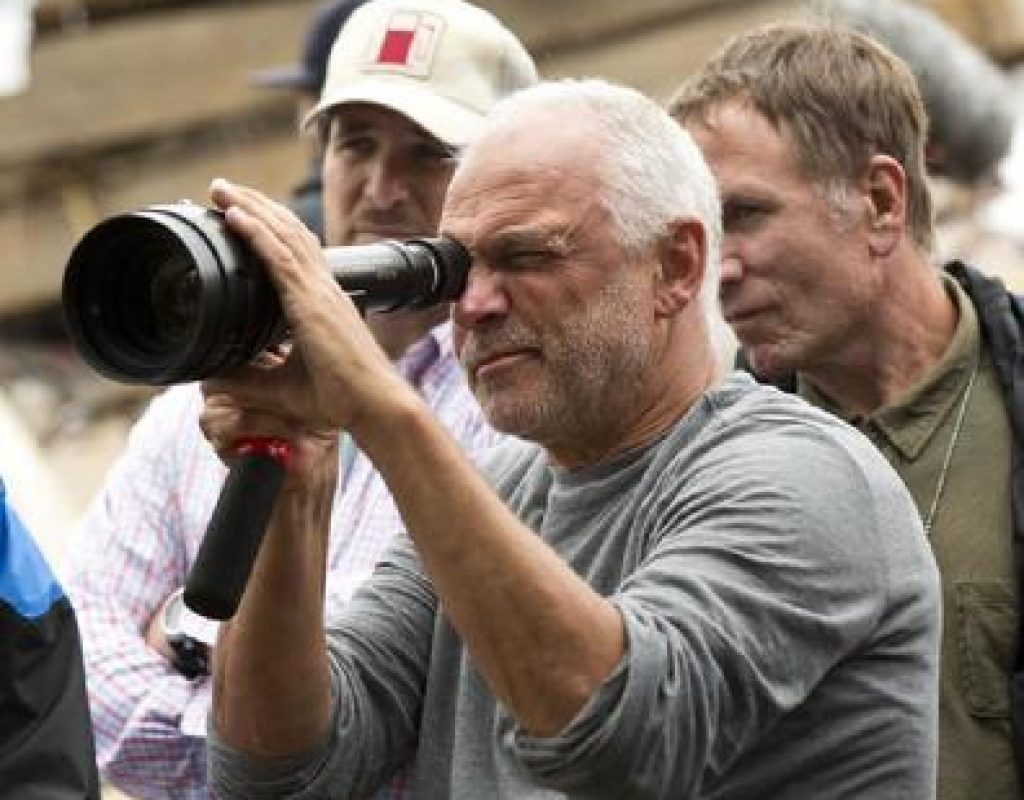One of Theo Van de Sande most recent films was the second edition of the Bill Bob Thorton film “Bad Santa 2.” The forever crass sequel found it’s frame with Panasonic’s VarCam 35. In this edition of Art of the Shot, I had the opportunity to talk to Dutch Film Academy graduate Van de Sande about his reasons for shooting on Panasonic’s flagship camera.
Theo is no stranger to a Hollywood feature comedy or drama. Before he even moved to Los Angeles he had already shot more than 25 features, 7 feature-length documentaries, and 30 shorts. His last film shot in The Netherlands was the 1986 film “The Assault” which received an Oscar and Golden Globe Award for Best Foreign Film.
Since then Van de Sande has worked in the U.S. as a cinematographer on more than 35 features with directors like Robert Wise, Lasse Hallstrom, Penelope Spheeris, Carl Franklin, Mick Jackson and Gary Fleder. In 2015 he received an ASC Nomination for the TV movie “Deliverance Creek.”
Along with director Michele Ohayon, his wife, he has shot and co-produced several award-winning documentaries. “Colors Straight Up” received an Oscar nomination for Best Feature Length Documentary. “Steal a Pencil for Me” received the prestigious Yad Vashem Chairman’s Award.
HALLETT: I see that you shot Bad Santa 2 on the Varicam 35. Can you talk to me about why you chose that camera for this film?
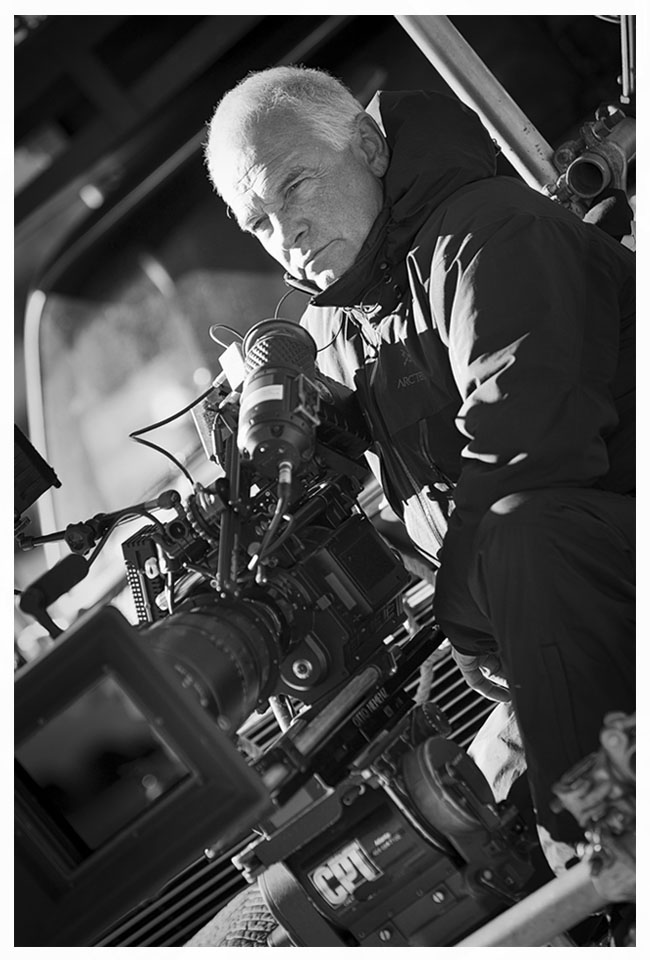 VAN DE SANDE: I chose the camera about two years ago. I was the first one to use it in the world professionally and there’s a reason, I was shooting for an Amazon pilot and they asked me, “what kind of camera do you want to use?” I said I’m going to use the Alexa, I know this camera and so do my assistants and everything else and it’s a good camera. They let me know that I could use the Varicam instead of the Alexa because of the fact their policy was to work on a 4K camera or more. I was a little irritated, because, for me, I told them it’s a little strange that the film like Iron Man and let’s say James Bond were shot on the Alexa for the big cinema and you, this is a small pilot, I’m not going to work on this camera. Then they said “That’s our policy” so just choose from the cameras.
VAN DE SANDE: I chose the camera about two years ago. I was the first one to use it in the world professionally and there’s a reason, I was shooting for an Amazon pilot and they asked me, “what kind of camera do you want to use?” I said I’m going to use the Alexa, I know this camera and so do my assistants and everything else and it’s a good camera. They let me know that I could use the Varicam instead of the Alexa because of the fact their policy was to work on a 4K camera or more. I was a little irritated, because, for me, I told them it’s a little strange that the film like Iron Man and let’s say James Bond were shot on the Alexa for the big cinema and you, this is a small pilot, I’m not going to work on this camera. Then they said “That’s our policy” so just choose from the cameras.
I had to work with other cameras like the Sony F55 and the Canon, at that time the 300 and I did not like, at that moment too much, the F55, I didn’t want to work with raw it was too heavy for such a small pilot. So I needed to look out for another camera. On my way home I thought “this is strange.” I myself, around 2012, had been part of the first meetings of the technical committee of the American Society of Cinematographers where we were trying to find a solution for the change from film to digital because film was for us, of course, the standard.
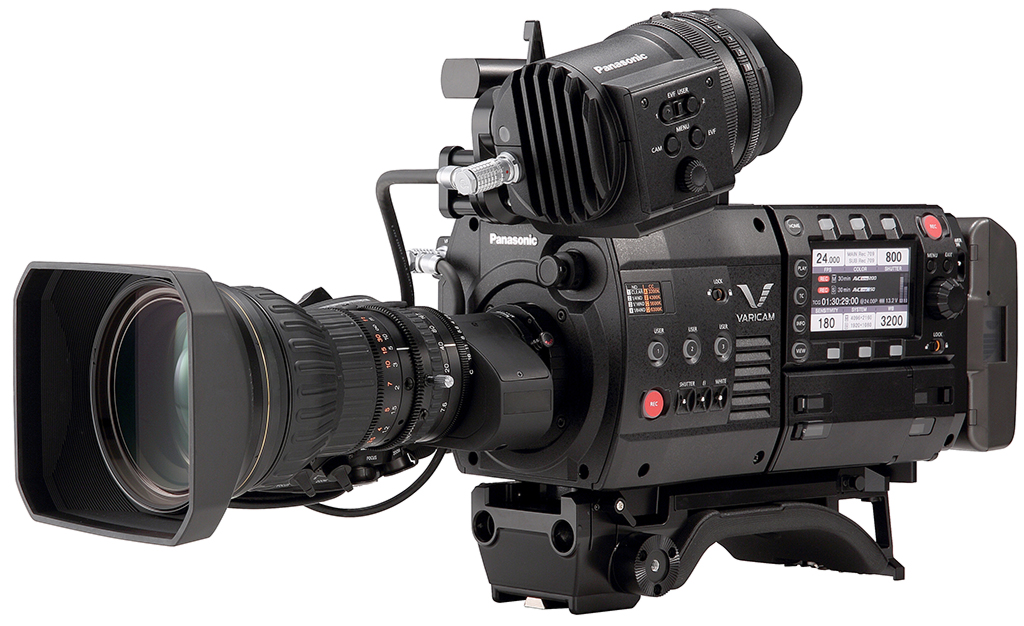 Of course, it’s a little difficult because it’s not only the resolution, of course, there are other things like color depth and dynamic range which are often more important than resolution. So we decided that film negative could compare with digital if it would be 4K and had the dynamic range of certain stops, color depth, and a filmic roll off on the highlights that was tremendous on film. So we decided not to stop, to find at least as good a digital system and to work on a digital system that was at least as good as film, meaning 4K, certain stops, and certain stops, dynamic range, color depth was comparable. In that, I worked for often documentaries and in documentaries, I had already shifted from 16mm to HD for quite a while and I used a Sony 900 that was used by Star Wars and I didn’t like it at all, I wasn’t really happy with that. But I had gotten to experience this work on digital. Now I realize I was asked to use a 4K camera so I thought look I have to do that and find a way to work with a 4K camera. The next day there was a presentation of the Varicam 35 on the ASC clubhouse and the camera was for me. I thought this is really something else and also there was a feature of 5000 ISO and I could already feel off the monitor that it was an interesting feature so I asked if the camera was ready and they said no it’s not ready, but what is “ready?” I only needed it for a comedy pilot for Amazon. It’s not a feature so I wanted to know what was “ready.” I said ok I will be able to purchase this camera so let’s make a test, but they were very careful because it would be the first time the camera was used and it was not ready they had not finished the whole software part of the camera, but I pushed them a little bit and so there we went.
Of course, it’s a little difficult because it’s not only the resolution, of course, there are other things like color depth and dynamic range which are often more important than resolution. So we decided that film negative could compare with digital if it would be 4K and had the dynamic range of certain stops, color depth, and a filmic roll off on the highlights that was tremendous on film. So we decided not to stop, to find at least as good a digital system and to work on a digital system that was at least as good as film, meaning 4K, certain stops, and certain stops, dynamic range, color depth was comparable. In that, I worked for often documentaries and in documentaries, I had already shifted from 16mm to HD for quite a while and I used a Sony 900 that was used by Star Wars and I didn’t like it at all, I wasn’t really happy with that. But I had gotten to experience this work on digital. Now I realize I was asked to use a 4K camera so I thought look I have to do that and find a way to work with a 4K camera. The next day there was a presentation of the Varicam 35 on the ASC clubhouse and the camera was for me. I thought this is really something else and also there was a feature of 5000 ISO and I could already feel off the monitor that it was an interesting feature so I asked if the camera was ready and they said no it’s not ready, but what is “ready?” I only needed it for a comedy pilot for Amazon. It’s not a feature so I wanted to know what was “ready.” I said ok I will be able to purchase this camera so let’s make a test, but they were very careful because it would be the first time the camera was used and it was not ready they had not finished the whole software part of the camera, but I pushed them a little bit and so there we went.
Since then I haven’t looked back because I have discovered that this camera is really much more practical and better in quality for my documentary work. That was an advantage because the codec is new. We now have the AVC codec, that is newer than the ProRes codec that Alexa uses. The ProRes codec is an Apple codec, but by now is quite old, it’s good but it’s very memory heavy and if you work with that amount of data then it is very important that it is efficient and that you can work fast, downloading and backing up a card with the color quality that you need for your film.
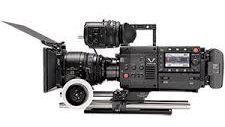 So that was to be the decision. There was a lot in this camera that was also coming from the Panasonic’s experience in ENG, Sports, and TV. They had developed so quickly that the quality of TV cameras had become the best cameras and they had become almost better than digital cinema. If you in that time were to buy a 4K tv and a 4K Blu-ray and you played it in the right circumstance, in the right distance then in fact the resolution, the color depth, and the quality of the image is technically better than digital cinema because the final quality of prints doesn’t have that much color depth, doesn’t have that much resolution and doesn’t have that much dynamic range. Tremendous development has happened over the last years where I was switching from quite long experiences in feature films, around 60 features films, to a system and not only a system, but another way of using light and another way of approaching storytelling visually. By having done that in documentaries where I was thrown into situations where I had to shoot and figure out and find out what the result was and learn very quickly it was very clear, apart from the important things like dynamic range, color depth, and resolution, the very practical elements like natural density filters for the camera was a fantastic quality. The fact that the camera is so ergonomic and was built as an ENG camera, not completely built, but at least had a feel and quality of ENG. It was not bulky, it was very well balanced and it had still some elements of the
So that was to be the decision. There was a lot in this camera that was also coming from the Panasonic’s experience in ENG, Sports, and TV. They had developed so quickly that the quality of TV cameras had become the best cameras and they had become almost better than digital cinema. If you in that time were to buy a 4K tv and a 4K Blu-ray and you played it in the right circumstance, in the right distance then in fact the resolution, the color depth, and the quality of the image is technically better than digital cinema because the final quality of prints doesn’t have that much color depth, doesn’t have that much resolution and doesn’t have that much dynamic range. Tremendous development has happened over the last years where I was switching from quite long experiences in feature films, around 60 features films, to a system and not only a system, but another way of using light and another way of approaching storytelling visually. By having done that in documentaries where I was thrown into situations where I had to shoot and figure out and find out what the result was and learn very quickly it was very clear, apart from the important things like dynamic range, color depth, and resolution, the very practical elements like natural density filters for the camera was a fantastic quality. The fact that the camera is so ergonomic and was built as an ENG camera, not completely built, but at least had a feel and quality of ENG. It was not bulky, it was very well balanced and it had still some elements of the 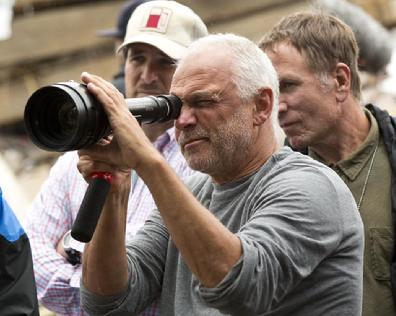 ENG and sports cameras like you were able to record sound in that camera and you would say hey I don’t need that in feature films, that’s not completely true you could use it in situations where you are certain that you can not use a slate. For example, when you are driving a race car or something like that and then you know that the sound you make you have the possibility to sync it up it doesn’t have the quality but you can always find the sync so you could use this camera and not use a slate anymore because now there are software programs that can sync up the sound. Little elements that make this camera very flexible. The biggest plus, of course, is a completely new element the 5000 ASA.
ENG and sports cameras like you were able to record sound in that camera and you would say hey I don’t need that in feature films, that’s not completely true you could use it in situations where you are certain that you can not use a slate. For example, when you are driving a race car or something like that and then you know that the sound you make you have the possibility to sync it up it doesn’t have the quality but you can always find the sync so you could use this camera and not use a slate anymore because now there are software programs that can sync up the sound. Little elements that make this camera very flexible. The biggest plus, of course, is a completely new element the 5000 ASA.
HALLETT: Talk about VariCam’s 5000 ISO feature?
VAN DE SANDE: That’s a new feature allowing you to get new possibilities visually. It keeps the dynamic range and the color depth and the contrast while you are on the 5000 ISO because it’s a native setting. It’s not an ISO that has been amplified from 800 ISO up to where you might get tremendous noise or you loose the dynamic range or you lose your color and that’s something that creates new possibilities to tell a story in another way. I don’t use it so much, only when I really am in a situation where I can use it or if I want to do something special but the nice thing is the 5000ISO is always there. So all these elements come together.
HALLETT: How often do you catch yourself shooting in a 5000 ISO?
VAN DE SANDE: That depends on the film. For example in the first pilot that they used, I didn’t use it more than 5 times or so. Then I also used the camera again, because I had another pilot coming up, a Gary Fleder directed the pilot, in Vancouver and we were shooting all over the place at night in all intersections, freeway, and bridges and underpasses so on that pilot you work with light that’s created. With the 5000 ISO, you have another base already, you get so much more out of your environment. That shoot became much more an art of omitting than creating an environment from scratch. This is unbelievable with this 5000 ISO because you don’t need a lot of urban light or existing light to create a rich environment that has the key light for you, for your set, your scene.
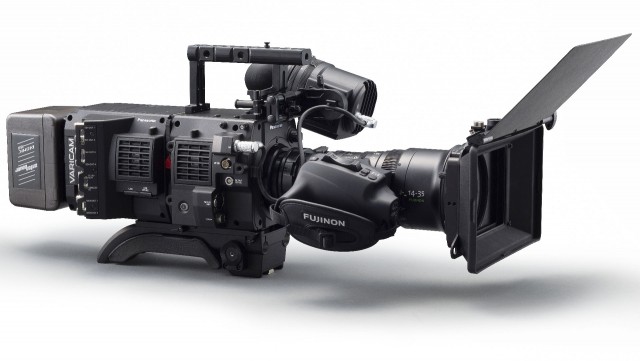
HALLETT: What kind of DP will succeed in that in future, do you think?
VAN DE SANDE: The cinematographer who wants to survive has to be a step ahead in what is going in the industry. You have to be, in every production, a step ahead otherwise it’s a step behind. There is no in between, things change so fast that you can’t say okay this is the camera I want to use. No, because the moment you use it there is work done to create a better camera and the next production a few months later there will be another camera that has more possibilities. Now that doesn’t mean that you need those possibilities for the film, the story that you’re telling at that moment, but you have to develop this, so that doesn’t mean you can’t use that camera…
HALLETT: Would you even consider telling someone to buy a camera now or just rent it?
VAN DE SANDE: To buy a camera? In my position? No, never. I always have had… I would do it for documentary because it’s such a long stretch and sometimes a day there, a day here and a day there. Documentaries can be a smaller production so buying a camera may be more efficient, but for a feature film absolutely not. I wouldn’t buy a camera because I come from renting cameras so I can use every camera. I used my own camera on very low budget films. I think I did 5 feature films on super 16, but the camera that I own is a camera that I use for my very personal work. I don’t buy more equipment than I can carry at once. That is my rule, I will not own more equipment than I can carry. I saw the documentary Eagle Huntress which was shot in Siberia and I was blown away not only by the quality of the big projection but also the quality of the film since they shot was in such a rural area, far, far away from the world and I read about it and I realized that is now possible, that you can really do fantastic things with very small and light equipment. Doesn’t mean it has to be cheap, in that sense I would do it, but not for cinema.
HALLETT: What’s next for you?
VAN SANDE: What’s next for me? In my career, I never knew three months before filming, and I’m not kidding. Only in Europe, I had certain friends, director friends, who I would visit them and discuss books years before we were on a project. Here in the states, it’s a completely different system where the cinematographer is called in as late as possible because he’s an expensive guy and it’s all about spending your time as quick as possible in the film business. Unless you are involved with the production early on, but that doesn’t happen so much because there are always, especially now, especially cinema production is so unreliable because getting the money together is more complicated and takes time. Things have become more complicated, it’s not like the film studios where the head of the studio was the guy who made the decisions and the head of the studio was also a filmmaker so to speak. The other part is that the story of what happens behind the scenes is much more tell-able then what we do, so the coming of the story, the making of the film is a small part of the process of producing a film. That brings me to another point. Change is the only constant in our professional world, so if you don’t change, you have no consistency. That is the most important thing a DP has to follow. If he doesn’t change all the time then something is wrong, he has to immediately realize something is wrong or he misses the boat.

Filmtools
Filmmakers go-to destination for pre-production, production & post production equipment!
Shop Now